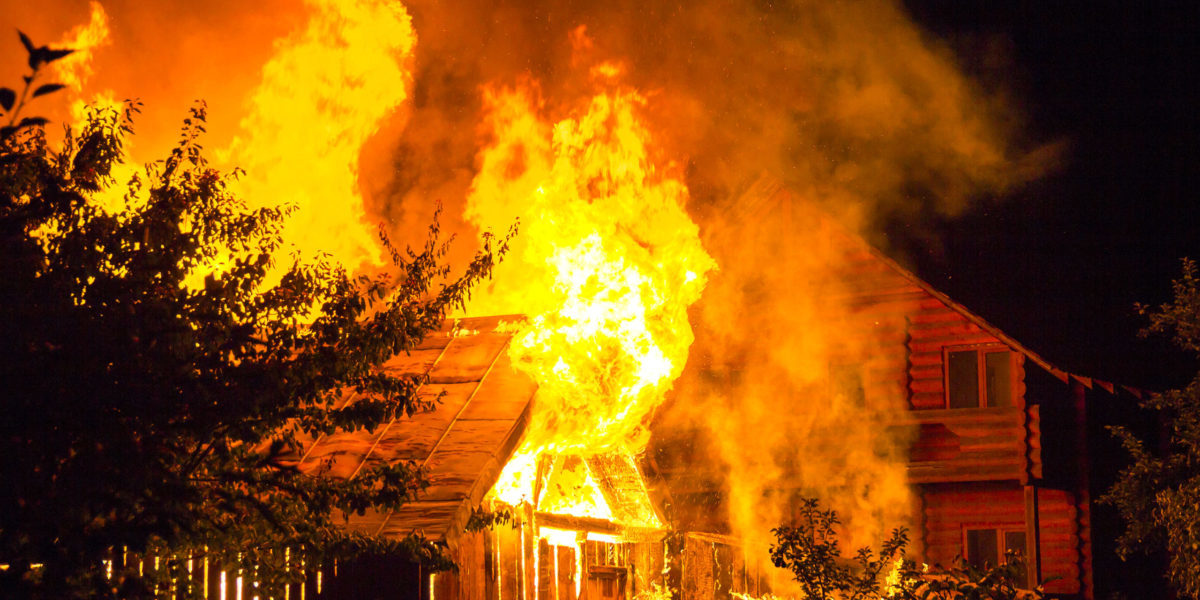In the ever-growing list of issues a police officer must be prepared for, responding to structure fires may fall way down the list, but maybe it shouldn’t. The risks and exposures from fires are growing every day, and police officers are often the first emergency personnel to arrive.
Police officers receive a few hours of training in firefighting during their academy days, and that is often the last time the concerns are raised until an officer gets hurt. Only then do police departments begin to look at the hazards to their officers. Firefighters across the United States are recognizing the change in fire dynamics due to light-weight construction and the prevalence of plastics and urethane elements of building furnishings. These changes are making the decisions to enter a burning building much more difficult than in the past.
Hazardous exposures to toxic smoke are having an increasingly rapid impact on , and the chemical makeup of the smoke and combustion by products are leading to more respiratory respondersissues and long-term damage than ever before. While these issues are in the forefront of safety discussions in the fire service, they often are lost in the shuffle when law enforcement discusses their primary safety concerns.
Police departments should educate their officers about the changing dynamics of fire today to ensure that officers have made a thorough and correct assessment of conditions before deciding to enter a building. Several cases have been documented where officers entered to search for or rescue occupants, only to find the police officers in need of rescue themselves. These officers have experienced career-ending, if not life-ending, injuries from the well-meaning efforts to enter a burning structure. Successful rescues also lead to the misguided belief that the officers will have time to affect a rescue, when the time from fire inception to building collapse has never been shorter in residential buildings.
Police departments should be reviewing and updating their policies for fire responses to ensure that officers know their role once on scene and understand the ramifications of making the wrong decision regarding entering a burning building, even when there are people known to be trapped within the structure. The policies should provide guidance on issues that will help with the suppression and investigation of a fire. Patrol cars should be parked so as not to hinder the fire department’s access to the building, including bringing water from a nearby fire hydrant. Vehicles should be parked with their dashcam (if equipped) focused in the direction of the fire to memorialize fire growth and movement, something that will be very valuable to the origin and investigation of the cause.
Police officers should be taught how to “size up” the fire and the structure to communicate critical information to the fire department. With this “size-up,” a determination can be made whether it is safe to try to enter the structure, or if entering will lead to an immediate danger to the life and health of the police officer. Guidance and education will be the only tools available to the officer when s/he tries to determine her/his best course of action.
These thoughts just scratch the surface on what is needed for police officers to be prepared to safely respond to fire emergencies with methods that not only protect civilians, but also themselves.
*The views and opinions expressed in the Public Risk Management Association (PRIMA) blogs are those of each respective author. The views and opinions do not necessarily reflect the official policy or position of PRIMA.*

By: Kenneth Child
Risk Control Supervisor, PMA Companies
Summary of Qualifications
Kenneth is a risk control professional with over 30 years in the industry, the past 18 focused on public entity risk control and reduction. He is also:
Volunteer firefighter. Ex-chief with over 36 years of fire service experience.
Volunteer EMT with over 40 years of experience responding to medical emergencies including treating victims of fires and smoke inhalation
Member of NJ State Firefighter Safety & Health Advisory Council
Responsibilities
Kenneth supervises a team of risk control consultants, providing guidance and training to more than 100 public entities across New Jersey and supporting consultants throughout the US for PMA Management Corp. This team provides consultations regarding all aspects of risk control and safety for their member clients through their relationship with their respective self-insured insurance funds.
Education
BS - Business Management Monmouth College (now University) West Long Branch NJ
Certified Safety Professional - BCSP
Associate Risk Management - Public Entities
Associate Loss Control Management
NJ State Certifications: Firefighter 2/ Fire Officer 1/ Fire Official/ Fire Instructor 1/ Fire Investigator/ EMT-B



